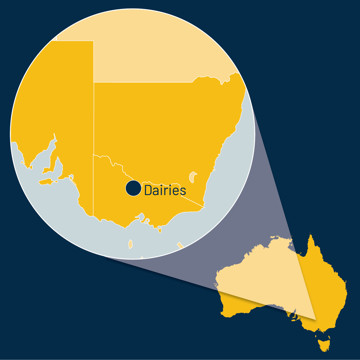Background
Duxton Dairies (Cobram) owns and operates a 998ha dairy allowing investors to participate directly in the Australian dairy industry. Australia is well-suited to dairy production because of its climatic conditions for pasture-based dairy, the quality and disease-free status of its herds, its proximity to fast-growing Asian markets, its low costs of production (pasture-based dairy has lower production costs than grain-fed dairy and generally makes for a superior investment opportunity) and its supportive regulatory framework.
Fundamental Drivers of Value
Increasing World Dairy Demand: Dairy consumption has been rising, driven predominantly by increased demand in emerging markets. As dietary patterns within these emerging markets continue to shift from that of a grain-based diet to a protein based diet, the global dairy industry is expected to benefit from increasing consumer preferences for products such as milk, cheese and butter, among others. World per capita consumption of fresh dairy products is projected to increase by 1.7% p.a. over the coming decade, slightly faster than over the past ten years, and driven by higher per-capita income growth.18
Per Capita Milk Consumption: The rate of growth and per capita consumption of milk and milk products remains significantly different among regions. Less economically developed countries are expected to consume < 50 kg per person per year on average, compared with 100 kg per person for developed countries.19
Redevelopment Opportunity
An assessment of Duxton Dairies 998ha property has determined that approximately 650 hectares could be converted to a permanent horticulture crop, with tree nuts offering the best use case for the land. Initial assessment of the macroeconomic and climatic environment has concluded that walnut orchards prove the optimal choice for the site. The election of walnuts is underpinned by ideal soil and climate, domestic demand, ability to secure biological material, a strong return profile and expressed interest from potential offtake partners. It is expected that this planting could begin as early as 2023.
18 OECD-FAO Agricultural Outlook 2021-2030
19 United Nations Food and Agricultural Organization (FAO) 2020, Milk - Excluding Butter - Food Supply Quality
